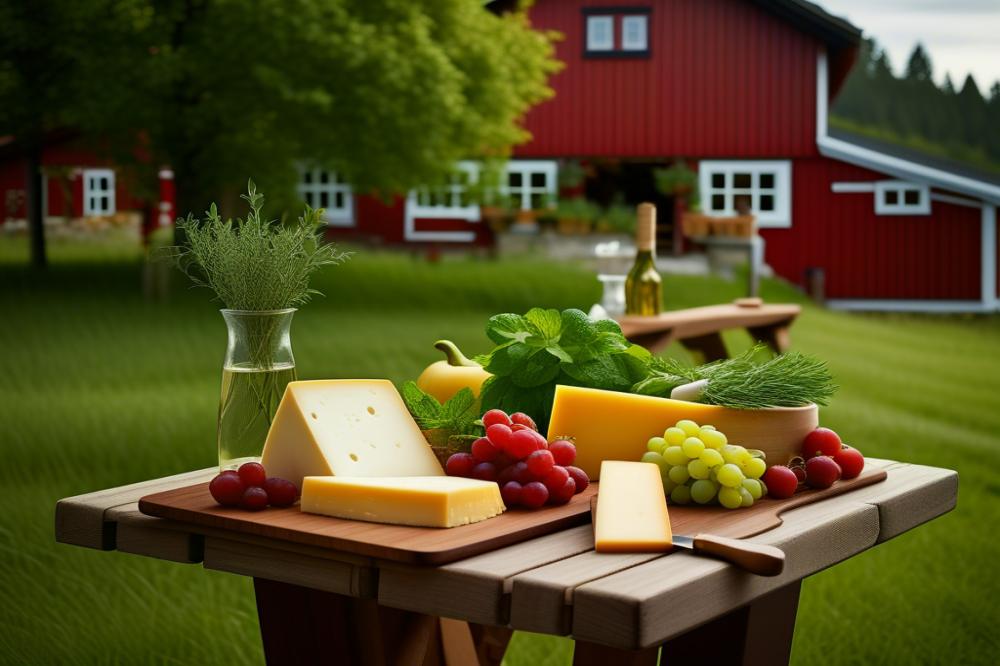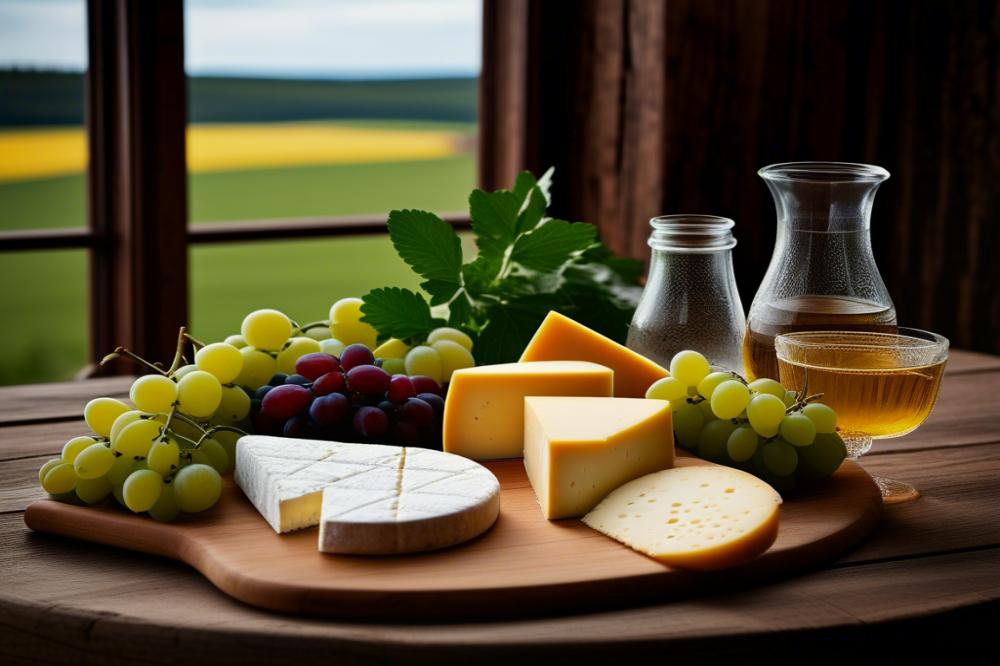Introduction
Sweden has a rich and fascinating history when it comes to cheesemaking. The craft of producing cheese is woven into the cultural fabric of this Scandinavian nation. It reflects local traditions, regional ingredients, and the practicalities of life in a challenging climate. Many people may not realize how significant cheese is to the Swedish culinary experience.
Throughout time, the evolution of cheese in Sweden can be seen in various forms and techniques. Early settlers brought with them the skills needed to transform milk into cheese, relying on resources from their surrounding environment. As centuries passed, this practice adapted to Sweden‘s geography and climate, leading to distinct varieties fulfilling different needs. For instance, the colder regions saw the creation of hard cheeses, while coastal areas favored softer, more delicate options.
Climate and geography play crucial roles in the types of cheese produced. The colder temperatures in many parts of Sweden create a unique environment for storing and aging cheese. This has influenced the flavors, textures, and even the styles available today. The natural resources, such as grass and water, directly impact the quality of milk used in production, which is vital for achieving top-notch flavors.
Cheese History in Sweden reveals a lot about the agricultural practices of its people. Dairy farming has been essential for sustenance in rural communities. This connection fosters a deeper appreciation for local cheesemakers who maintain traditions while also innovating. Today, many Swedes take pride in their artisanal cheeses, celebrating both history and modernity. These products showcase the unique flavors of the land.
Overall, the story of Swedish cheesemaking is one of adaptation and pride. It mirrors the resilience of its people and their connection to the land. Understanding this history not only enriches our knowledge but also enhances our appreciation for the cheese that has a special place on our tables. By exploring this journey, we can see how tradition can beautifully coexist with modern practices.
Swedish cheesemaking

Exploring traditional methods of cheesemaking in Sweden reveals a rich history. Generations have passed down various techniques and recipes. Each region has its own specialties, often reflecting local tastes and traditions.
Types of Swedish Cheese
Västerbottensost is arguably one of the most famous varieties. It hails from the Västerbotten region. This cheese has a strong flavor and a crumbly texture. It is often compared to an aged cheddar. Another noteworthy type is Prästost. This cheese is semi-hard and has a mild, yet flavorful profile. It’s perfect for sandwiches or snacking.
In addition, there’s Hushållsost, a household cheese that many Swedish families know well. It’s slightly nutty and ideal for everyday use. Another delightful variety is Gotland’s Drizzle, which brings a unique twist with its hint of sweetness. Craft Cheesemakers throughout the country have also begun experimenting with new flavors.
Ingredients and Techniques
Milk is the primary ingredient in all Swedish cheeses. Various types of milk may be used, including cow, goat, and sheep. Local farmers often supply the freshest milk. This ingredient defines the taste and texture of the final product. Rennet, a natural enzyme, plays a crucial role in the curdling process. Salt is also vital, as it helps to preserve the cheese and enhance its flavor.
Traditional methods often involve using wooden molds and handcrafting the cheese. In many cases, cheesemakers opt for non-industrialized techniques. This approach allows for greater control over the end product. Fermentation is another key process. It influences the development of flavor and texture over time.
Following the initial curd production, cheeses may undergo aging. During this time, flavors intensify and develop complexities. The duration can vary significantly between different varieties. The influence of the surrounding environment, including air and humidity, cannot be overlooked. These factors contribute to the cheese’s character.
Through these methods, cheesemaking becomes an art form. It requires patience and dedication. The result is a diverse range of cheeses that tell a story of culture and land. Swedish cheeses not only offer distinctive flavors but also provide a taste of history.
Cheese History

Looking back at the history of cheese in Sweden reveals a rich and fascinating story. Ancient methods laid the groundwork for today’s practices. Dairy farming, a crucial part of Swedish culture, has roots tracing back thousands of years. The early people learned to transform milk into flavorful cheese, a skill that became essential for preserving food. Over time, these methods evolved, leading to distinctive regional varieties.
Various historical events have influenced cheesemaking in Sweden. The Viking Age played a significant role in developing trade routes. These routes allowed for the exchange of not just goods, but also techniques and flavors. As Scandinavians ventured across seas, they encountered new ideas about dairy processing. This blending of cultures enriched local cheesemaking traditions.
In the Medieval period, monasteries became important centers for cheese production. Monks perfected their craft, developing recipes that are still celebrated today. Trade also expanded during this era, as cheese became a valuable commodity. The interaction with other European nations introduced different styles and techniques to Swedish artisans.
The 19th century marked a turning point for the industry. As urbanization increased, the demand for cheese grew. Innovations in technology allowed for mass production. This change ensured that families could enjoy cheese daily, not just on special occasions. Consumers began to appreciate the variety, leading to the development of more unique cheese types.
More recently, there has been a revival of traditional cheesemaking methods. Many artisans are returning to the roots of their craft. This movement highlights the importance of local ingredients and sustainable practices. As people become more interested in their food sources, they seek out authentic flavors. Pride in heritage and craftsmanship now resonate with cheese lovers across the country.
Understanding the historical journey of cheese in Sweden is like tasting a fine wheel of cheese. Each layer reveals a story worth telling. From ancient farmers to modern artisans, this history shows the passion behind every bite. The influences of trade, culture, and innovation have shaped a vibrant cheesemaking landscape. Swedish cheeses today showcase this journey, inviting everyone to explore and enjoy.
Delicious Swedish Cheese Recipe

Making traditional Swedish cheese at home is a rewarding and fun experience. With just a few ingredients, you can create a tasty cheese that reflects Sweden’s rich dairy heritage. This recipe is accessible and offers a glimpse into the art of cheesemaking.
Ingredients
- 1 gallon of whole milk
- 1/4 teaspoon mesophilic starter culture
- 1/4 teaspoon liquid rennet
- Cheese salt to taste
- Optional: herbs or spices for flavor
Instructions
Start by heating the milk in a pot until it reaches 85°F (29°C). This step is important as it creates the right environment for the cultures. Stir in the mesophilic starter culture and let it sit undisturbed for one hour.
Next, dilute the rennet in 1/4 cup of cool, chlorine-free water. Gently stir the mixture into the milk. It’s crucial to handle the milk carefully during this part. Let it set for about 60 minutes. After this time, cut the curd into small cubes.
Slowly heat the curds to 100°F (38°C), stirring gently the whole time. This process helps develop the texture. Once the curds have reached the desired temperature, drain off the whey. Now, mold the curds into your cheese forms.
Press the curds gently for 4 to 6 hours. Then, remove your cheese from the molds. Salt it to taste, adding herbs or spices if you want unique flavors. Finally, age the cheese for at least 2 weeks. Allow the cheese to develop its full flavor during this time.
Nutritional Information and Health Benefits
Homemade Swedish cheese is not only delicious but also nutritious. It packs a good amount of protein, essential for muscle health. Calcium content is high, supporting strong bones and teeth. The probiotics present in the cheese can aid digestion and boost gut health. Enjoy this wholesome treat as part of a balanced diet!
Final Thoughts on the Art of Cheesemaking
Swedish cheesemaking is a profound blend of culinary tradition and cultural identity. With roots that go back centuries, each type of cheese tells a story reflective of the landscapes and communities in Sweden. Local artisans craft these cheeses with care, often passing down techniques through generations. This practice emphasizes how food connects us to our history.
Exploring Swedish cheese varieties can be a delightful journey. From the creamy Västerbotten to the tangy Kosterost, each cheese has a role in Swedish cuisine. Trying out some recipes inspired by these cheeses can further enhance your culinary experience. Imagine creating a delicious cheese platter or incorporating these cheeses into a warm dish.
Tradition takes center stage in this art form. However, modern cheesemakers are also blending innovation with these age-old techniques. They experiment with flavors while still respecting the roots that make these cheeses special. This connection between past and present illustrates the living nature of this craft.
Encouragement comes from the fact that these cheeses deserve to be tasted and appreciated. When you sample a bit of Sweden’s traditional cheese, you partake in a rich heritage. So why not take a moment to find a Swedish cheese or try your hand at a recipe? It’s an easy step toward celebrating the beauty of food traditions while cherishing the innovative spirit of modern creators.



